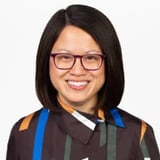Summary
How do we shape design organizations to always be in service of the user? Peter Merholz talks about how everything changed when he focused on getting the organization operations correct instead of just getting the design right. Peter Merholz is the VP of Design at Snagajob and the co-author of "Org Design for Design Orgs."
Key Insights
-
•
Great user experiences require aligning design strategy, execution, and organizational structure, not just individual designer skills.
-
•
Centralized design teams offer community and consistency but often struggle with strategic influence and slow delivery.
-
•
Decentralized embedded designers gain ownership and speed but suffer loneliness, skill narrowing, and fractured experiences.
-
•
A hybrid centralized partnership model balances dedicated design skill teams with close collaboration across product teams.
-
•
Organizing product, design, and engineering teams around customer types and journeys creates more coherent, customer-focused solutions.
-
•
Strong team leadership is crucial: leaders must manage down (team empowerment), across (stakeholder relationships), and up (executive communication).
-
•
Design organizations benefit from diverse skill sets beyond interaction and visual design, including content strategy and research.
-
•
Clear, shared definitions of design quality and brand experience principles enable designers to be bold and focused.
-
•
Leaders must be willing to say no to overextension, preserving capacity to deliver high-quality design work.
-
•
Relying solely on process without attention to the content and quality of the work leads to mediocrity and frustration.
Notable Quotes
"Execution is in service of the user."
"It’s not enough to have great people; you need to create the space that brings out the best in them."
"Centralized design teams tend to be brought in after decisions are made, turning design into an us versus them relationship."
"Designers embedded in teams often feel lonely and their work leads to fractured user experiences."
"Organize your product managers, designers, and engineers around customers, not features or code repositories."
"Design is always going to be subjective, so you have to figure out what quality looks like in your organization."
"If you want your teams to be bold, you need explicit quality standards and the courage to say no."
"Team leadership means managing down to empower your team, managing across to build stakeholder relationships, and managing up with executives."
"Relying on process is not a proxy for quality, and divorcing process from content is a fatal enterprise mistake."
"When the design team is organized into coherent teams working across multiple squads, designers feel more supported and less isolated."
Or choose a question:
















More Videos

"When you’re smashing silos, the first wall you try to break through always gets bloody."
Kristen Honey"Let’s Talk About Data and Crisis”: Public Digital Service Delivery = Open Data + Human Centered Design
November 18, 2021
"We had to push up the ladder to VP and COO level to get the maker schedule endorsed and mandated."
Panel Discussion: Communicating the Value of DesignOps
November 7, 2018

"Germany is a large federation with 16 federal states and an additional European Union layer, making digital service delivery quite complex."
Magdalena ZadaraZero Hour: How to Get Far Quickly When Starting Your Digital Service Unit Late
November 16, 2022

"Nobody wants to be told to do your thing unless it’s clear that it helps their thing. It’s just human nature."
Maria GiudiceBecoming a Changemaker by Leading with Design
March 29, 2023

"Value of design is never going to get a single answer because you need the who, what, and why."
Sarah CoyleDesign and Analytics with Sarah Coyle
July 30, 2020

"As the delivery driver, I connected the dots, got people briefs, and sometimes said no to lofty leadership requests."
Briana ThomasThe Quiet Force: Uncovering Hidden Leadership in High-Impact Design Teams
September 24, 2024

"Product analytics is much more desired than it is put into use right now among qualitative researchers."
Dave HoraA Research Skills Evolution
March 10, 2021

"It’s like knowing how to drive a car doesn’t mean you can drive a semi; research has do’s, don’ts, and methodologies."
Clemens Janssen Jane DavisEfficiently Scaling Research as a Team of One
March 28, 2023

"Endlessly justifying yourself rarely changes others’ opinions. It positions design ops as up for debate."
John Calhoun Rachel PosmanMeters, Miles, and Madness: New Frameworks to Measure the (Elusive) Value of DesignOps
September 24, 2024
Latest Books All books
Dig deeper with the Rosenbot
How do shared ‘watch parties’ or team review sessions enhance understanding of accessibility challenges?
How does Nick view the relationship between creativity and constraints in sustainable design?
What practical practices can make accessibility a sustainable part of daily design and development workflows?
















